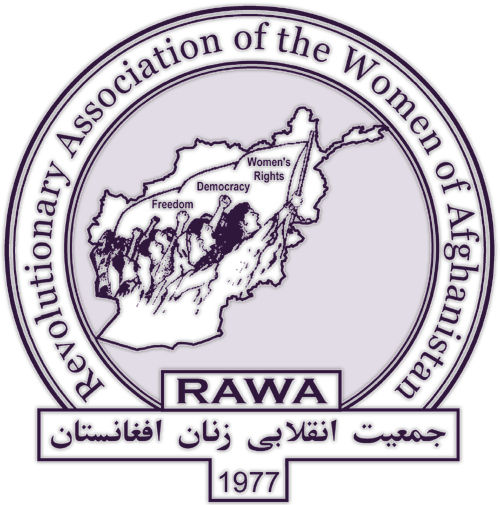Daily Report
UN rights expert condemns recent killing of women in Pakistan, Afghanistan
UN Special Rapporteur on violence against women Rashida Manjoo on July 18 urged the governments of Pakistan and Afghanistan to end violence against women and to initiate investigations into the recent killings of two women. Fareeda Afridi, a human rights defender in Pakistan [Federally Administered Tribal Areas], was recently shot dead by two men when she was walking to her office. The second case involved a public execution of a woman [22 years old and identified only as Najiba] accused of adultery in Afghanistan [at an unidentified location north of Kabul]. [The report also noted the slaying of Hanifa Safi, local head of the Ministry by a roadside bomb in Laghman province.] Manjoo stated that such violence against women amounts to "State crime when tolerated by public institutions and officials—when they are unable to prevent, protect and guarantee the lives of women, who have consequently experienced multiple forms of discrimination and violence throughout their lifetime."
Usual suspects blame usual suspects in Bulgaria terror attack
No surprises here. A bomb goes off in a tour bus in the Black Sea resort city of Burgas, Bulgaria, killing five Israelis and wounding some 30. Netanyahu wastes not a minute: "All signs point to Iran. In just the past few months we've seen Iran try to target Israelis in Thailand, India, Georgia, Cyprus and more. The murderous Iranian terror continues to target innocent people. This is a global Iranian terror onslaught and Israel will react forcefully to it." Probably not coincidence that the attack comes on the 18th anniversary of the AMIA bombing in Buenos Aires, the world's most deadly attack on Jews since World War II, which has been linked to Hezbollah. More Netanyahu (apparently trying to set a record for number of uses of the word "terror" in a single press release): "Eighteen years exactly after the blast at the Jewish community center in Argentina, murderous Iranian terror continues to hit innocent people. This is an Iranian terror attack that is spreading throughout the entire world. Israel will react powerfully against Iranian terror."
Colombia: indigenous protester killed as army retakes base
One person was killed and 23 wounded as Colombia's army retook a base that had hours earlier been occupied by protesters in Cauca department July 17, local indigenous authorities said. Special forces troops were sent in to clear the 1,000 protesters armed with sticks who briefly took control of the "Berlin" army base, located in war-torn Toribio municipality. Photos showed Nasa indigenous protesters armed with sticks physically ejecting soldiers from the base. National Police backed up the army troops to evict the protesters, firing tear gas. Nasa indigenous authorities said army troops also opened fire. Defense Minister Carlos Pinzón, while not confirming the death, said the troops had "the right to defend themselves…if the indigenous initiate an aggression." President Juan Manuel Santos denounced the takeover of the base via Twitter, saying, "I do not want to see a single indigenous in the military bases." And: "Make no mistake. We will not allow attacks on those who defend us. Everything has a limit."
Moorish Orthodox Radio Crusade: from Peru to Timbuktu
In the eighth YouTube edition of the Moorish Orthodox Radio Crusade, World War 4 Report editor Bill Weinberg discusses the cultural survival struggles of the Quechua of Peru and the Tuareg of Mali—the first threatened by global capitalism, the second by the global jihad, in a demonstration of the paradoxical unity of opposites.
Brazil: Xavante territorial rights affirmed following ranchers' uprising
Brazil's indigenous affairs agency FUNAI issued a statement July 5 affirming the validity of a May 2010 ruling of the First Regional Federal Tribunal in Mato Grosso state that called for the return of usurped lands of the Xavante indigenous people. FUNAI demarcated the 165,000 hectares as Xavante indigenous territory in 1992, but ranchers and soy producers now in possession of the lands in question challenged creation of the reserve, to be called Marãiwatsede, near the towns of Cuiabá and Alto Boa Vista. The Xavante were pushed from their lands by Brazil's military government in 1966, and the Marãiwatsede area is now one of the most completely deforested areas of the Amazon Basin. When Xavante led by chief Damião Paridzané held protests at the Rio+20 Summit on Sustainable Development last month to pressure for return of their lands, local ranchers in the Marãiwatsede territory launched an uprising, blocking roads and burning bridges.
Puerto Rico: environmentalist kayaks for prisoner's release
On July 12 Puerto Rican environmentalist Alberto de Jesús arrived at Fort de France, capital of the French overseas department of Martinique, the latest stop in a 1,100-mile journey from Venezuela to Puerto Rico by kayak that the activist has undertaken to publicize the situation of Oscar López Rivera, an independence fighter who has been imprisoned in the US for 31 years. De Jesús, who is widely known as "Tito Kayak," began his trip on June 20 at the Venezuelan town of Macuro, on the Paria peninsula. Despite an injury to his wrist and damage to the kayak during the first days of the journey, de Jesús was determined to continue to Puerto Rico; afterwards he may go on to the US East Coast.
Honduras: three die in continuing Aguán violence
Unidentified persons seized Gregorio Chávez, a 69-year-old campesino, on July 2 while he was working near the Paso Aguán estate in the Lower Aguán Valley in northern Honduras. Residents of the nearby Panamá community said they heard gunshots and found signs that someone had been dragged toward the estate. After searching for four days, on July 6 residents found Chávez's body buried on the estate, with evidence that the campesino had been tortured, according to a communiqué by the Permanent Human Rights Monitoring Center for the Aguán.
Mexico: thousands protest "imposition" of PRI
Mexico City residents responded to the country's July 1 presidential and legislative elections with a massive and apparently spontaneous demonstration on July 7 repudiating the official results. Thousands marched from the Angel of Independence to the Zócalo plaza to protest what they called the "imposition" of Enrique Peña Nieto, the presidential candidate of the centrist Institutional Revolutionary Party (PRI). They charged his electoral victory was the result of fraud, vote buying and biased publicity by the media.















Recent Updates
2 hours 21 min ago
1 day 5 hours ago
2 days 10 hours ago
2 days 23 hours ago
2 days 23 hours ago
3 days 22 hours ago
3 days 23 hours ago
3 days 23 hours ago
5 days 2 hours ago
5 days 7 hours ago